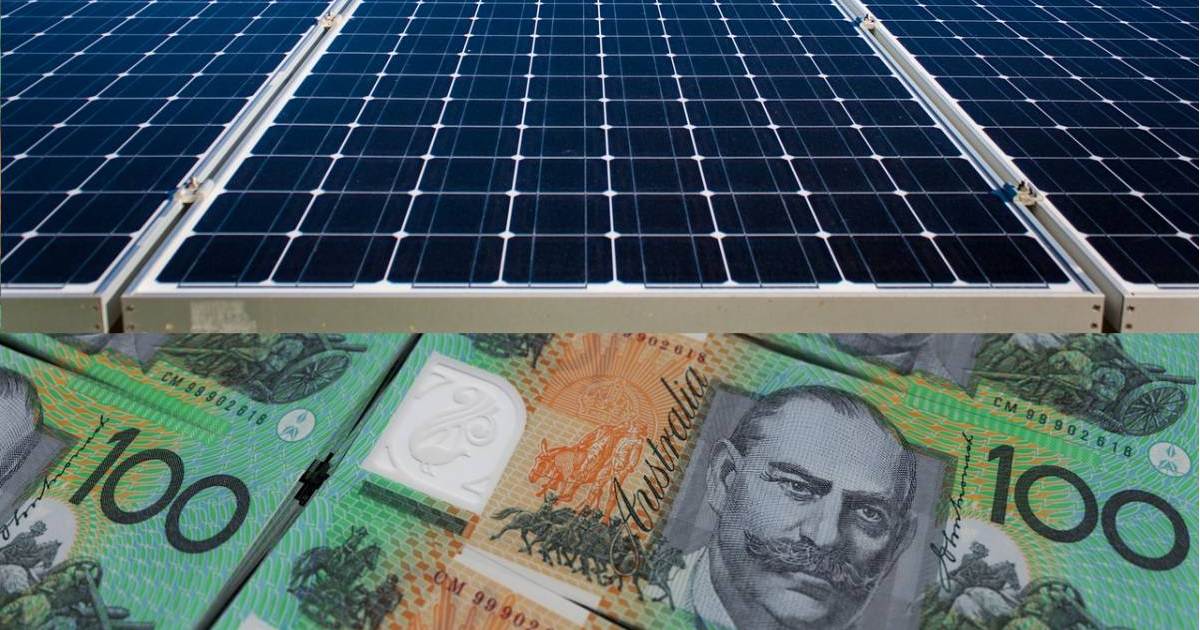
2022 has zoomed by, and it won’t be long before Australia’s national solar rebate will get another haircut. Here’s what you need to know – and why getting quotes sooner rather than later could be a good move.
While called a “rebate“, the incentive is actually an up-front subsidy1 applied at the point of sale that can slash thousands off the purchase cost of a typical home solar power system, and in the case of bigger systems to 100kW capacity; up to tens of thousands.
The subsidy is based on bits of virtual paper called STCs (Small-scale Technology Certificates). While STCs can’t be created until after system is installed, their value (minus admin fees) is provided as a point-of-sale discount.
The number of certificates a system is eligible is based on several factors – the geographical location of installation, solar panel capacity and importantly, the year of installation. The value of these certificates fluctuates with market conditions, and STC spot prices this year have generally been fairly steady.
Why Year Of Installation Impacts The Solar Rebate
The rebate has reduced each year on January 1 since 2017 as part of a planned phase-out, and will drop to zero in January 2031. So, when the calendar flips over to January 2023, there will be another reduction.
Just as an example, an eligible 10kW solar system installed in Brisbane on December 31 will be eligible for 124 STCs. That same system installed on January 1 will be eligible for 110 STCs – 14 fewer certificates.
Tip: to find out how many STCs a system is eligible for now and next year, try SolarQuotes’ STC calculator; it’s super-easy to use.
So, How Will That Impact The Subsidy?
Based on STC spot prices remaining steady and minus admin fees, the 10kW solar power system installed in 2023 will eligible for around $500 – $600 less subsidy (i.e., up-front discount) – it’s a significant chunk of change.
It’s Only October, Plenty Of Time – Right?
The key thing to bear in mind is the rebate is based on installation date, not the date a sales contract is signed.
Good solar installers are generally pretty busy, so from the time you get quotes to choosing an installer, to having the panels on your rooftop can be some weeks. I had a new system installed recently and from the time of initial enquiry to further discussions, proposal tweaks etc., through to installation finalised was around 6 weeks. My understanding is 6 weeks go to whoa is a fairly common timeframe – but it can be longer in some areas depending on demand and installer availability.
As installers’ books start filling for pre-2023 installations, they’ll then start quoting based on a 2023 install with the rebate reduction factored in. While it’s certainly not time to panic-buy – and it never is as that can lead to a poor purchase decision – if you’re on the cusp of getting around to getting quotes, now is a good time to pull the trigger.
The other important points to consider:
- The longer your rooftop is without solar panels, the longer your household or business is locked into electricity bills much higher than they would otherwise be.
- Even if you can’t get solar installed in 2022 for whatever reason, a (good quality) installation in 2023 will still be a great investment. Hopefully there will be reductions in system hardware costs between now and then, but that’s not guaranteed.
While on the topic of incentives, you can check out what else is available for solar, batteries and even electric cars in each Australian state and territory on SolarQuotes’ rebates and subsidies page.
Footnotes
- Sometimes confused with feed-in tariffs (a different incentive). ↩

 RSS - Posts
RSS - Posts



I want to install a 10kw solar system with optimisers, as we have shaded areas due to trees shading our current string system. Each time I get a quote it appears that none of the quotes spell out the brand of solar panels, the inverter, monitoring and other critical issues like listing the optimisers in the quote. Comparability of the optimisers and the story goes on. They give a basic price and present absurd warranties. No projected performance figures and installation time other than a nebulous approximate installation time. Is it me or have others been confronted with these undermining behaviours from suspect sales people. I have little faith in the many conversation with prospective solar sales people and sit in wonder of what to do. The latest quote for a 10kw system is $14,500 less Stc’s is $11,600. No brand names, no mention of optimisers or how the monitoring of the usage will be provided. Please help as I am ready to install and want to make the right decision. Cheers Ian
Hello Ian
Any installer we refer to you will provide a full quote including panel and inverter brand and whether or not optimisers are included. If they don’t, let us know and we’ll get onto them. If you’d like to get quotes through us, go here…
https://www.solarquotes.com.au/quote/start/
…and enter your postcode and answer the questions that come up as best you can. We carefully vet all installers we refer so we know they go good work and we back them up with our Good Installer Guarantee:
https://www.solarquotes.com.au/installation-guarantee/
Optimizers are one option for dealing with shade, but modern solar inverters without optimizers also do a good job of minimizing losses from shade. Your installer will be able to inform you of your options — or at least one you get through us will.